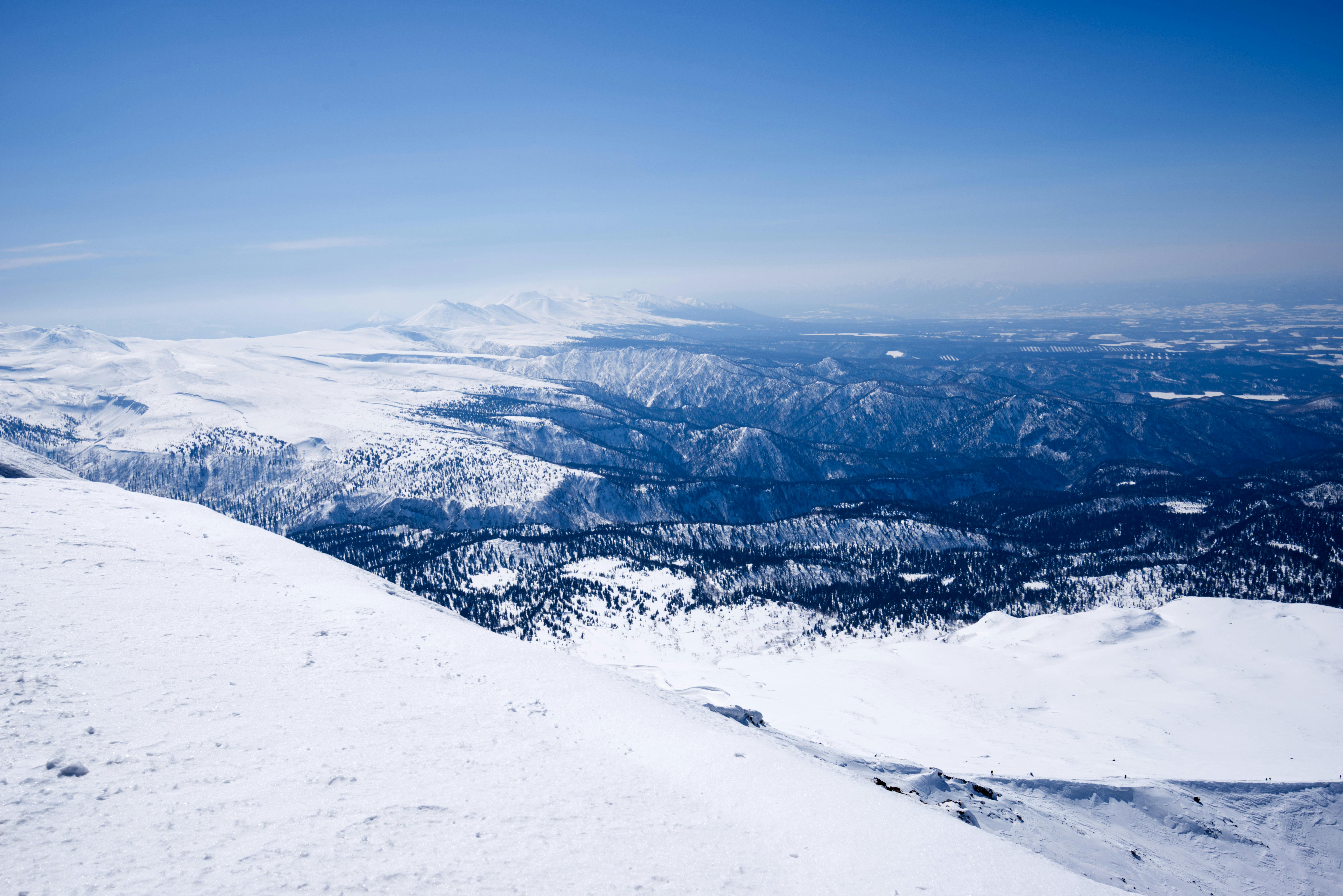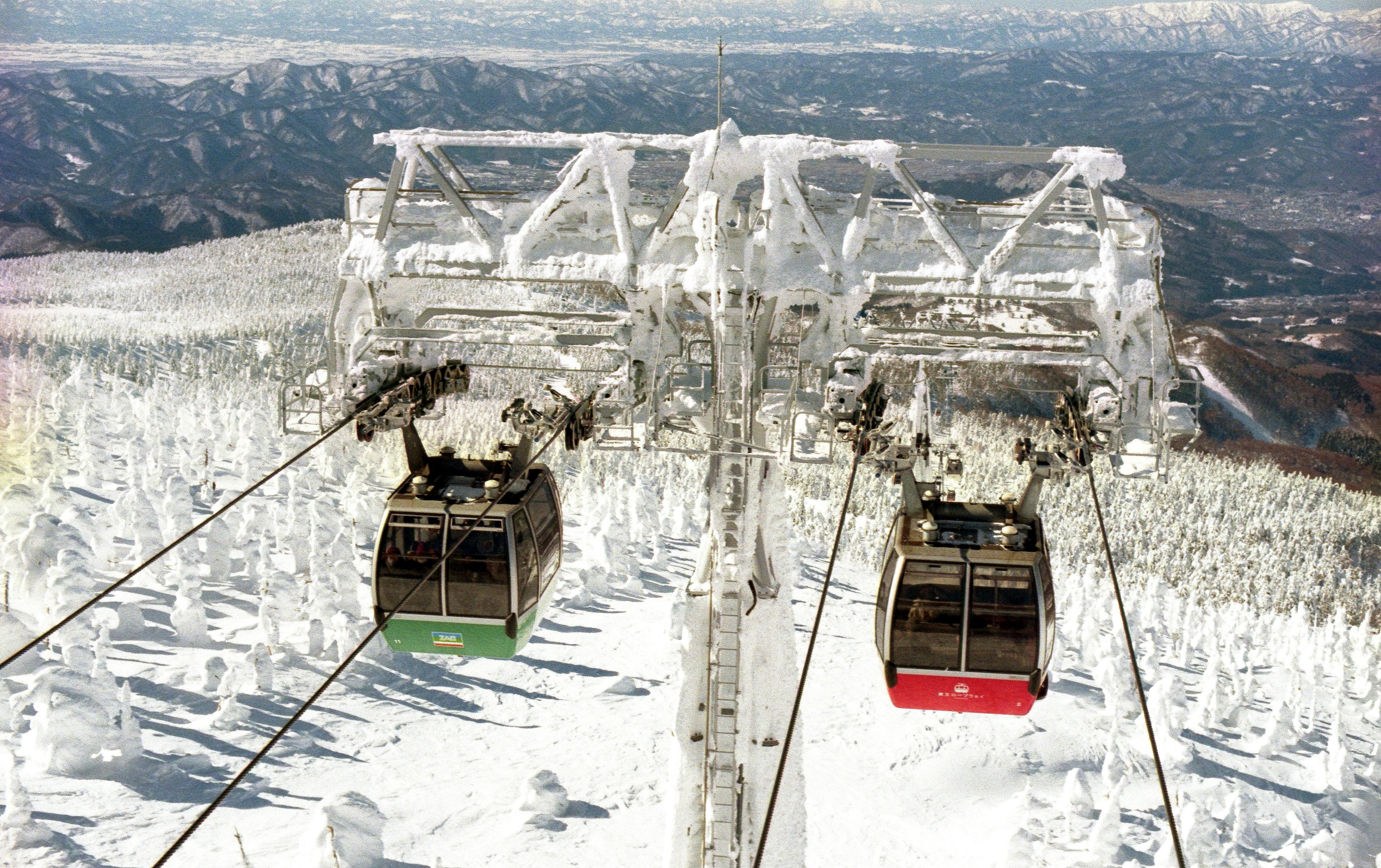Seasons
Step into a quieter, more contemplative Japan—where snowy temples, steamy mountain onsens, and glowing winter festivals reveal the country at its most atmospheric. From ski retreats to cultural rituals, this curated guide helps you experience winter in Japan with grace and ease.
November 1, 2024
10 mins read
From snow-covered temples in Kyoto to steaming open-air onsens tucked deep in the mountains, winter in Japan is a season of quiet enchantment. The country transforms into a land of serene beauty and ritual warmth, where the pace slows and nature softens into stillness. Whether you're gliding down the powdery slopes of Hokkaido, strolling beneath luminous city illuminations, or savoring hot amazake in a centuries-old ryokan, winter offers a more introspective and immersive way to experience Japan.
When Is Winter in Japan?
Japan’s winter season typically spans mid-December to late February, marking a distinct shift in both climate and cultural rhythm. This is a time when snow begins to fall across the northern mountains, city parks turn crisp and clear, and the country moves into a more contemplative pace after the New Year.
While the intensity of winter differs by region, a few constants define the season: this is the best time for skiing and snowboarding, for soaking in open-air onsens, and for witnessing the country’s famed illumination festivals. It’s also a period of deep cultural importance, anchored by traditions around Oshōgatsu, or Japanese New Year, where families return home and temples echo with the sound of ceremonial bells.
If you’re planning your travels around winter’s highlights—whether snow monkeys, lantern-lit hot springs, or alpine resorts—this window offers a beautifully varied canvas across Japan’s diverse regions.
Best Things to Do in Japan During Winter
Japan in winter reveals its magic not just in where you go, but in how you spend your time. These seasonal experiences offer travelers the chance to embrace the country’s softer rhythms, where warmth is found not only in temperature but in tradition. Whether you’re drawn to light-filled festivals or the solace of mountain onsens, the following highlights are among the most cherished ways to experience Japan at its most atmospheric.
Visit Illuminated Winter Festivals
Wander through glowing wonderlands like Sapporo Snow Festival, Nabana no Sato, and Ashikaga Flower Fantasy. These dazzling displays are a winter must.
Soak in an Outdoor Onsen
Experience pure bliss in hot spring towns like Kusatsu, Ginzan, and Hakone—bonus points if you're soaking with snow monkeys in Nagano.
Enjoy Seasonal Food & Hot Drinks
From bubbling nabe hotpot to sweet amazake and charred grilled mochi, Japan’s winter flavors warm the body and soothe the soul. These traditional dishes aren’t just comforting—they reflect seasonal harmony and regional culinary heritage.oden, nabe hotpot, amazake, and grilled mochi. These cozy flavors are a cultural experience in themselves.
Go Skiing or Snowboarding
Ski Japan’s finest resorts like Hakuba, Niseko, and Shiga Kogen—renowned for powder snow, world-class terrain, and scenic onsen retreats nearby. Hakuba, a legacy site from the 1998 Winter Olympics, offers ten diverse resorts nestled in the Alps. Niseko delivers deep snow and a vibrant international vibe, while Shiga Kogen charms with its vast slopes and quieter atmosphere.
See Castles, Shrines & Temples in Snow
Iconic spots like Kinkaku-ji, Matsumoto Castle, and Shirakawa-go are stunning in winter’s hush and snowfall.
Where to Go in Japan During Winter
Hokkaido
In winter, Hokkaido becomes a sanctuary of snow. The Sapporo Snow Festival turns the city into a whimsical world of ice sculptures, while the Otaru Canal, frozen and illuminated, recalls the romance of a bygone era. Beyond the festivals, the island’s sweeping powder fields draw skiers from across the globe, yet there are still corners of solitude where steam rises from hidden onsen under a canopy of snow-covered pines.
Tohoku Region
The Tohoku region, often overlooked by hurried travelers, reveals its greatest beauty in winter. This is Japan at its most elemental—mountains sculpted in white, forests silent under frost, and onsen villages like Ginzan and Zao glowing warmly against the cold. In Zao, the otherworldly Juhyo, or “snow monsters,” cling to trees in crystalline forms, a surreal sight only winter can conjure.
Tokyo & Surroundings
Tokyo’s winter is clean and composed, the air brisk and skies uncommonly clear. While snow rarely falls, the season brings glittering illuminations, from Marunouchi’s golden trees to Shibuya’s dazzling displays. The city's modern rhythm continues beneath layers of seasonal elegance, and just beyond its reach, day trips to Hakone or Mount Fuji provide gentle introductions to Japan’s winter landscapes.
Kyoto & Kansai Area
There is a contemplative grace to Kyoto in winter. As crowds thin and the chill sets in, the temples and gardens take on a quiet majesty. Snowfall is infrequent but transformative—when it comes, it dusts places like Kinkaku-ji in gold and white, creating a fleeting scene of ethereal beauty. Local confections shift to heartier seasonal wagashi, and the simple act of sipping tea becomes a meditation in warmth.
Nagano
A quintessential winter destination, Nagano combines alpine adventure with cultural charm. Its crowning jewel, Hakuba Valley, offers ten ski resorts with Olympic pedigree, renowned for both powder and views of the Northern Alps. Beyond the slopes, the region is dotted with quiet villages, scenic ryokan, and famed hot springs—including Jigokudani, where snow monkeys bathe in warm waters surrounded by snow. To plan your skiing experience in more detail, visit our Japan Ski Guide.
Winter Weather in Japan by Month
Month | Avg Temp | Key Highlights |
|---|---|---|
December | 5–12°C | Illuminations, early snow |
January | 0–8°C | Peak ski season, snow festivals |
February | 1–10°C | Snow monkeys, deep onsen season |
Packing Tips:
Bring a warm coat, layers, waterproof boots, heat packs, and gloves. Cities are cold and dry; mountains can be snowy and icy.
Japan Winter Travel Tips
Planning a winter journey through Japan requires both curiosity and care. Accommodations should be reserved well in advance, especially in ski resorts or during the New Year holidays, as domestic travel peaks at the turn of the year. Keep some yen on hand when visiting rural hot spring towns, where digital payments may not be widely accepted.
FAQ About Winter in Japan
What should I pack for Japan in winter?
Warm clothes, layers, waterproof shoes, and heat packs. Even Tokyo can feel icy in January!
Is December a good time to visit Japan?
Yes—especially for illuminations, early snow, and lower crowds before New Year.
Can I see snow in Tokyo or Kyoto?
Rarely. Snow falls a few times a year, but you're more likely to see it in nearby mountains.
What are the best onsen towns in winter?
Japan’s best winter onsen towns include Kusatsu, Ginzan, Nyuto, and Kinosaki—places where steaming hot springs meet snowy backdrops in storybook mountain settings. Try Kusatsu, Nyuto, Ginzan, or Kinosaki for magical winter soaking.
What's the best time for skiing in Japan?
Peak ski season in Japan is from mid-January to early February — for a full resort comparison, check our Japan Ski Guide.
Should I pre-book onsen towns or ryokan in winter?
Yes — many hot spring resorts book out early in winter. Our Booking Guide can help you navigate the best platforms.














